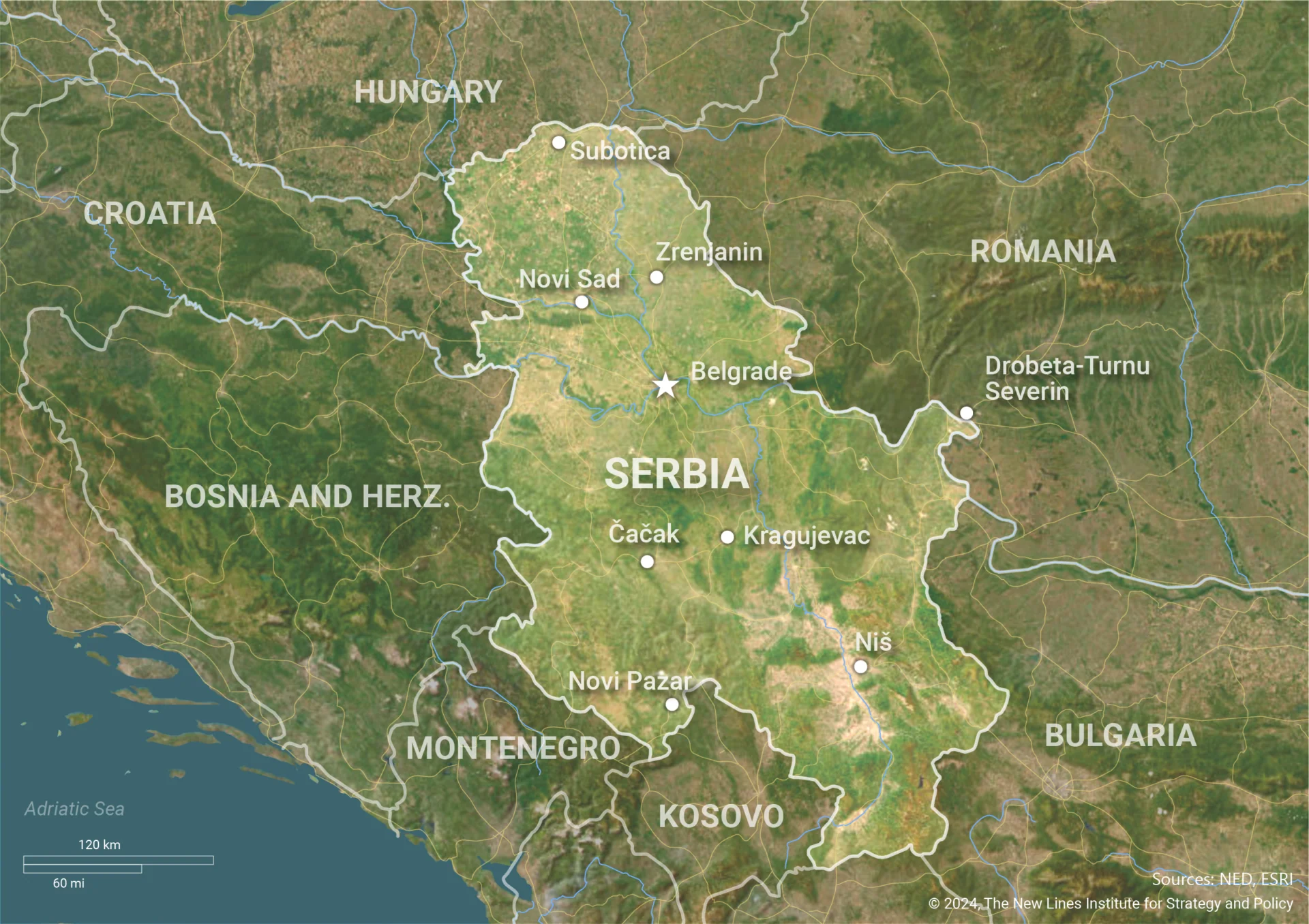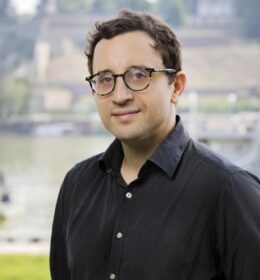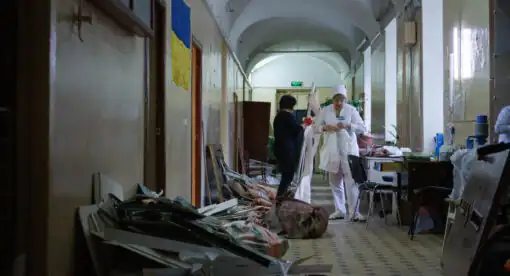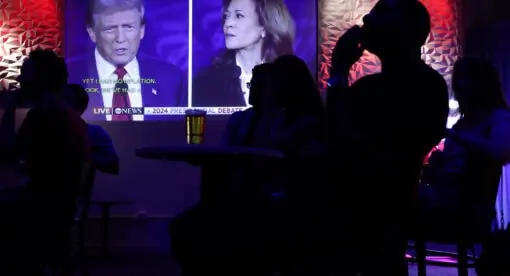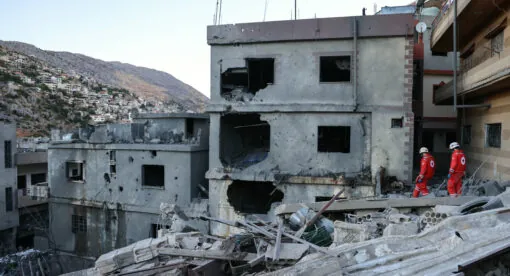Introduction
In postcommunist Europe, Serbia stands out for its unique security posture. Following the disintegration of Yugoslavia in the early 1990s, Serbia was involved in a series of wars in Croatia, Bosnia and Herzegovina, and finally Kosovo, which ended with NATO intervention in 1999. It strongly opposed Kosovo’s declaration of independence in 2008, an act that has been recognized by most other Western countries. Partly because of NATO’s overall role in this process, Serbia declared military neutrality and developed strategic partnerships with Moscow and Beijing. Simultaneously, Serbia identified EU membership as a priority, became an official candidate country in 2009, and commenced negotiations in 2014. Today, Serbia has a hybrid regime that domestically relies on tight media control, while internationally it has pursued a policy of hedging.
To understand the many apparent contradictions of Serbia’s national security posture, it is important to keep in mind both the structure of the Serbian security apparatus and the perceptions, both official and popular, of the security threats the country faces. Perhaps most important to that understanding would be an examination of Serbia’s Kosovo policy, which wields a significant influence over its foreign, security, and defense policies.
The National Security System in Serbia
The national security system in the Republic of Serbia is composed of governing and executive components. The National Assembly, the president of the Republic, the government, and the National Security Council constitute its governing arm. The National Assembly adopts legislative and strategic documents, holds purse power by adopting the annual budget, has the power to declare war, scrutinizes the work of the government, and ratifies international agreements.
Although the normative framework ascribes significant competencies to the legislative branch, in practice, it has served as a rubber-stamp institution controlled by the ruling party, particularly since the Serbian Progressive Party (SNS) rose to power in 2012. Laws are often passed in an emergency mode, bypassing public hearings and debate. Furthermore, the ruling party frequently employs filibustering and other forms of obstruction to prevent the National Assembly, especially opposition lawmakers, from meaningfully scrutinizing the executive branch.
According to the normative framework, Serbia operates under a semi-presidential system in which the government and the president divide executive power. The president coordinates and directs the national security system, presides over the National Security Council, commands the Serbian Armed Forces (SAF), and promulgates laws. The president also issues decrees within his jurisdiction in the fields of security and defense.
In practice, the Serbian president wields much more influence than constitutional and legal frameworks outline. Even before the democratic backsliding that occurred in the 2010s, the power of the directly elected president hinged on whether the officeholder also held control over the government. In such cases, the president’s actual influence would significantly increase, approximating that of a pure presidential system. While democratic backsliding began not long after ascension of the SNS in 2012, it accelerated following the victory of its leader, Aleksandar Vučić, in the 2017 presidential election. Since then, Serbia’s score on the Freedom House index declined from “Free” to “Partly Free” in 2019, with a continuing downward trend, due in part to the unconstitutional consolidation of powers in the hands of the president. Another term that captures well the essence of the Serbian regime under Vučić is a “spin-dictatorship,” as its authoritarian rule is based on spin and disinformation thanks to its near-total control of the media.
The normative framework ascribes the primary executive power to the Government of Serbia, which consists of the prime minister and the Cabinet. It oversees the state administration, including ministries and other entities within the security sector, such as the ministries of Defense, Interior, Justice, and Foreign Affairs, and intelligence agencies. The government also influences the security sector by proposing and implementing the budget for public expenditure. Additionally, it contributes to shaping the normative framework by initiating legislation and adopting bylaws in the fields of security and defense. In practice, however, contrary to constitutional stipulations, the government is de facto appointed by and entirely subordinate to the president. The technocratic Prime Minister Ana Brnabić (serving since 2017) with limited political influence of her own has publicly referred to Vučić as “her boss.”
The National Security Council (NSC) addresses issues related to defense, internal affairs, and intelligence agencies. It oversees interagency cooperation and suggests measures for the advancement of national security. Additionally, the council coordinates the activities of intelligence agencies. The NSC comprises the president and prime minister, plus the ministers of Defense, Internal Affairs, and Justice and chief of the general staff. Within the NSC, the Coordination Bureau is tasked with coordinating the intelligence agencies and implementing the council’s decisions. The bureau is headed by a secretary appointed by the president. Given the secretary’s power in setting the bureau’s agenda and access to highly sensitive information, it considered one of the most influential roles in the security sector. The Office of the National Security Council and the Protection of Classified Information provides administrative support for the NSC.
The executive component of the national security system comprises the SAF, police forces, and security-intelligence agencies. As of 2023, the SAF consists of 28,150 active members and 50,150 reservists. Although mandatory conscription in the SAF was suspended in 2011, government officials on numerous occasions, including the general staff in January 2024, have suggested the reinstatement of compulsory military service, a popular position among two-thirds of Serbians. Since Vučić assumed office in 2017, the defense budget has doubled, reaching $1.4 billion in 2022. This increase has enabled the SAF to modernize, enhanced their maintenance and readiness, and bolstered air-defense capabilities. The Serbian police force comprises 27,000 uniformed personnel Serbia has three intelligence agencies. The civilian Security Information Agency encompasses both intelligence and counterintelligence functions and is directly accountable to the Government of Serbia. The Military Intelligence Agency and the Military Security Agency are administrative bodies within the Ministry of Defense responsible for intelligence and counterintelligence activities, respectively.
Threat Perception
In terms of threat perception, official and public views diverge. Strategic documents and broader policy discussions reflect the official perception of threats to Serbia, with the National Security Strategy being the main document outlining perceived official security threats. The latest version of that report (2019) lists, in order of concern, separatist aspirations in Kosovo and associated armed rebellions, terrorism, proliferation of weapons of mass destruction, ethnic and religious extremism, hostile foreign intelligence activity, organized crime, drug addiction, mass illegal migration, economic and demographic challenges, infectious diseases, energy insecurity, incomplete demarcation processes with neighbors, disasters and accidents, climate change, and cyber threats. Similarly, the latest Defense Strategy of the Republic of Serbia (2019) identifies key threats as armed aggression, which was considered unlikely in 2009 separatism in Kosovo and the south of Serbia, armed rebellion, terrorism, ethnic and religious extremism, disasters and accidents, cyber threats, and disinformation, among others.
In wider policy discourse, separatism in Kosovo is considered to be the predominant security challenge. The only exception was the COVID-19 pandemic, which eclipsed all other threats, especially in the early phase when Serbia declared a state of emergency. Since the Russian invasion of Ukraine in February 2022, the threat of war has been heightened in the policy discourse. The list of securityt challenges has been expanded with potential isolation and even sanctions due to Serbia’s decision not to join the EU’s restrictive measures against Moscow. Even before these developments, Vučić and the SNS frequently made dubious claims in the media of foiling attempts by foreign or domestic perpetrators to stage a color revolution or coup d’etat or assassinate the president. Domestic critics of the regime, including the independent media, civil society organizations, and opposition figures, are routinely portrayed in the government-controlled media as enemies of the state, allegedly instrumentalized by Western powers to destabilize the country. In the aftermath of elections in December 2023, which international and domestic observers characterized as deeply irregular, the regime-controlled media portrayed protesters who decried the electoral fraud as bloodthirsty puppets of the West who want to create another Maidan in Belgrade.
The public’s perception of threats looks quite different. According to the most recent polls conducted by the Belgrade Centre for Security Policy in 2023, the top national security threats, according to citizens, are inflation (83.0%), economic crisis (82.8%), energy crisis (82.1%), organized crime (82.1%), and the trafficking of illicit drugs (80.5%). Threats traditionally prioritized by the government, such as armed conflicts in the region, violent extremism and terrorism, or cyberattacks, are seen as less threatening (60.3%, 47.1%, and 45.9%, respectively). According to another poll conducted by the Regional Cooperation Council, the biggest perceived threats include crime, organized crime, drug trafficking, violence, and vandalism (77.0%); the possibility of an armed conflict between ethnic groups or political instability in the Western Balkans (50%); the misuse of firearms and trafficking of arms (52%); economic crisis, poverty, and social exclusion (36%); the influx of migrants (36%); and terrorism (36%).
When asked to predict the next three years, a significant share of respondents expected organized crime (47%), cybersecurity threats (42%), terrorism (37%), and armed conflicts between ethnic groups or separatist political ideologies (35%) to increase. In this respect, respondents in Serbia are both growing more pessimistic than in previous years and more pessimistic than respondents in other Western Balkan countries, where an average percentage of people expecting threats to increase in the next three years are lower (terrorism 23%, armed conflicts 24%, cybersecurity threats 32%, migrants 34%).
Serbia’s Kosovo Policy
Kosovo became a part of the Kingdom of Serbia in 1912. It remained an integral part of Serbia and Yugoslavia for the next 87 years. Then, following the civil war from 1998 to 1999, NATO intervention, and the withdrawal of the Yugoslav military and Serbia’s police, Kosovo came under the international military and civilian jurisdiction of the Kosovo Force (KFOR) and the United Nations Interim Administration Mission in Kosovo (UNMIK). The only remaining Serbian state presence in Kosovo consisted of the so-called parallel institutions in the Serb-majority municipalities, especially in the north of Kosovo, in the field of health, justice, and civil defense, which were, at that time, still financed and operated by the government in Belgrade. According to Serbia, Kosovo remains its autonomous province, which is stipulated in both the Serbian Constitution and in UNSC Resolution 1244. The fall of the Slobodan Milošević regime in 2000 initiated Serbia’s democratization, but there has been little change in the policy rhetoric across the political spectrum that Kosovo is, and should remain, a Serbian province. In 2008, Kosovo declared independence, a move Belgrade strongly objected to and is still seen as fundamentally undermining national security.
In 2012, following the advisory opinion of the International Court of Justice, which stated that the unilateral declaration of independence did not breach international law, the EU initiated and facilitated a normalization dialogue. Since then, in addition to many technical agreements that have been concluded, two political deals have also been struck: the Brussels Agreement signed on April 19, 2013, and the so-called second Brussels Agreement verbally agreed to on Feb. 27, 2023, followed by the Implementation Plan agreed to in Ohrid on March 18, 2023. The deals have been marred by slow and incomplete implementation, ambiguity, and occasional escalations, for which Belgrade and Pristina accused each other.
One of the reasons behind this outcome has been the policy of Vučić and the SNS toward Kosovo, which has oscillated between irreconcilable calls for EU-led normalization and a discourse that Serbia should never recognize Kosovo and that the Serbian military should eventually return there. In the context of the EU-facilitated normalization dialogue, the government showed a commitment to normalization of relations short of full recognition, as evidenced by the conclusion of the two milestone Brussels agreements. Moreover, in contrast to previous governments, Vučić dismantled parallel institutions and implemented most technical agreements, although some were implemented after considerable delay. A recent example was the implementation of an agreement on license plates, concluded in 2011 and implemented following the contested elections on Dec. 17, 2023, a development likely to neutralize international interest in election irregularities.
Vučić and his government have maintained strong nationalist rhetoric that Kosovo is part of Serbia and that Belgrade will never recognize its independence, regardless of the consequences. Under his watch, the Serbian public discourse on Kosovo, with some exceptions, has shifted to the right. Graffiti in Serbian cities depicts Serbia’s military returning to Kosovo. Government-controlled tabloids routinely promote anti-Albanian sentiment. Serbia’s rulers and its media defame anyone who publicly advocates a more conciliatory approach to the Kosovo issue while supporting the growth of far-right opposition parties that call for the military reconquest of Kosovo. Although Vučić dismantled the parallel institutions, he undermined pluralism among the Kosovo Serbs by creating the Serb List, a political party that monopolized the political space using incentives, coercion, and intimidation. In September 2023, a group of armed men, led by the vice president of the Serb List, Milan Radojičić, who has been sanctioned by the U.S. and U.K., were involved in an attempted military uprising in the North and were hailed as heroes in Serbia.
Although the discrepancy may seem paradoxical, this apparent ambiguity is a reflection of a rather consistent two-pronged logic. The first aspect is related to signaling. By maintaining a tight grip on the Serbian media, Vučić presents himself as the guardian of Serbian national interests, capable of outmaneuvering his opponents, protecting Kosovo Serbs, preventing full secession of Kosovo and its joining of the United Nations, and buying time before a new balance of power emerges in world politics, which could lead to preconditions for a fairer resolution to the Kosovo issue. On the international stage, Vučić carefully curates his image as a pragmatic leader willing to compromise, in contrast to the hotheaded politicians in Pristina who are blamed for the normalization dialogue failures. His primary argument is Pristina’s lack of willingness to establish the Association of Serb Municipalities, an agreement reached in 2013.
The second aspect of this ambiguity is strategic. Until 2008, Vučić was a high official in the extreme nationalist Serbian Radical Party, championing the Greater Serbia project. Since then, he has moderated these views and repackaged these aspirations under the concept of the “Serbian World.” In essence, this concept aims for an ever-closer economic union among Serbs in the region, potentially leading to peaceful political unification. Consequently, Kosovo Albanians fear that the association could create a “state within a state,” potentially turning Kosovo into another Bosnia and Herzegovina. Although these fears might seem unfounded given the Association’s weak competences, as outlined in the 2013 Brussels Agreement, Belgrade’s rhetoric on the “Serbian World” has only intensified these anxieties.
Foreign, Defense, and Security Policy
Serbia’s multipronged foreign policy is based on a strategy of hedging, which can be defined as “ambiguous alignment vis-a-vis one or more major powers.” Since 2000, pursuing EU membership has been one of its foreign policy priorities. It signed the Stabilisation and Association Agreement in 2008, became a candidate in 2012, and started accession negotiations in 2014. However, in recent years, negotiations have not progressed due to Serbia’s deficit in the rule of law, challenges in normalization talks with Pristina, and reluctance to align with EU sanctions against the Russian Federation. Overall EU enlargement fatigue, although not a critical factor at this stage of the accession process, also did not contribute positively in this context.
Another Serbian foreign policy priority is its international diplomatic efforts against the recognition of Kosovo’s independence. To that end, Serbia has maintained close relations with countries that do not recognize Kosovo, most importantly within the U.N. Security Council (China and Russia). Moreover, Serbia initiated a campaign of de-recognition, claiming that it has convinced 27 countries to withdraw their recognition of Kosovo. The Ministry of Foreign Affairs of Kosovo contends the accuracy of that number is contested. Independent research has established that 13 countries have withdrawn their recognition of Kosovo, though the recognition status by an additional 13 countries remains unclear while one country restored its recognition.
Although both the EU and Serbia have advanced the narrative that Serbia’s entry into the EU will not be conditioned on Belgrade’s recognition of Kosovo’s independence, in practice, these two foreign policy priorities contradict each other. Even if the EU, which lacks a consensus on this matter, has not explicitly stated it, 22 of its 27 member states have recognized Kosovo and expect Serbia to come to terms with this reality before joining the EU. Moreover, Russia’s and China’s opposition to Kosovo’s independence has bolstered their bilateral relations with Belgrade, which includes growing defense cooperation and arms sales, a development that concerns both Brussels and Washington. In the past, Serbia has acquired weapons from Russia, including MiG-29 jets, Mi-17V-5 and Mi-35M helicopters, and the Pantsir-S1 air defense system. Serbia also ordered electronic warfare systems, such as Repellent and Krasukha, and there has been speculation that these systems might have arrived in early 2024. From China, Serbia acquired CH-92A drones as well as the FK-3 air defense system.
In addition to the arms trade, Serbia has maintained close relations with Russia in several other sectors, including energy, as Russia commands a significant portion of Serbia’s gas industry. In 2012, the Russian-Serbian Humanitarian Centre was opened in Niš in 2012, raising speculation about its potential militarization. During the parliamentary and local elections held Dec. 17, Russian media operating in Serbia (RT and Sputnik) openly sided with the government in its smear campaign against the opposition and civil society organizations, labeling them as Western puppets. Following the contested elections, the Kremlin condemned the opposition’s protests and depicted them as an attempt to stage a color revolution in Serbia. Meanwhile, the FSB provided intelligence to the Serbian government about concrete plans to violently overthrow state institutions. The aftermath was a violent crackdown on the protest and the arrest of 40 individuals, including many students and even high schoolers, who were charged with seeking a violent change to the constitutional order.
The most controversial issue has been Serbia’s reluctance to join the EU sanctions against Russia. As early as 2014, Serbia declared neutrality regarding the war in eastern Ukraine and did not join the EU’s sanctions against Moscow. Following the full-scale invasion of Ukraine on Feb. 24, 2022, Serbia reiterated its support for the territorial integrity of Ukraine and joined the U.N. General Assembly’s resolutions condemning the invasion. However, it refrained from joining EU sanctions despite multiple warnings from Brussels that noncompliance might seriously hinder its EU membership prospects. Although the Serbian government pledged that the country would not be used to circumvent U.S. and EU sanctions, media reports indicated that Serbian companies had been exporting dual-use goods to Russia. In the latest Country Report on Serbia, the EU stated, “Serbia is expected to urgently improve its alignment with the EU Common Foreign and Security Policy, including adherence to EU restrictive measures, and to refrain from actions contrary to EU foreign policy positions.”
An important aspect of Serbia’s foreign and security policy is its stance within the Western Balkans region. Officially, Serbia adheres to a status quo policy, which entails full respect for territorial integrity as guaranteed by international law. This includes adherence to UNSCR 1244, which stipulates that Kosovo is part of Yugoslavia/Serbia, as well as to peace agreements such as the Dayton Peace Agreement, which ensures the territorial integrity of Bosnia and Herzegovina and also affirms the prerogatives of Republika Srpska. According to the 2019 Defense Strategy, “the preservation of Republika Srpska as an entity within Bosnia and Herzegovina, in accordance with the Dayton Agreement, and the enhancement of the position of Serbs in the region and the world, are of particular importance for the security and defence of the Republic of Serbia.”
However, there is also a rising concern, especially among Serbia’s neighbors, that Belgrade has a revisionist agenda in the Western Balkans. In recent years, Serbia has also developed the policy discourse of the “Serbian World” akin to the Russian policy for the near abroad (Russian: Russkiy mir). The concept, popularized by then-Defense Minister Aleksandar Vulin in 2020, implied the political unification of Serbs. However, the policy has never been formally articulated in any document and remains subject to various interpretations. These range from views that it represents a form of benevolent soft power and concern for the Serbs in the diaspora, to accusations that it is a thinly veiled Greater Serbia project aiming to include all territories where Serbs live, such as Republika Srpska, Montenegro, and North Kosovo.
In terms of defense policy, Serbia declared military neutrality in December 2007. Owing to the carefully cultivated trauma of the NATO intervention in 1999, military neutrality has become one of the country’s few policies, alongside the nonrecognition of Kosovo, that enjoys a stable majority of over two-thirds in public opinion. Consequently, Serbia’s defense doctrine is based on the concept of total defense, which entails a comprehensive reliance on one’s own military and civilian capacities and strengths. Since 2011, Serbia has suspended mandatory military service, although there have been increasing calls for its reintroduction in light of the deteriorating geopolitical situation in Europe.
Serbia is the largest weapons producer in the region, and in 2021, it sold weapons worth $384 million to the United Arab Emirates, the U.S., Cyprus, Algeria, Uganda, Azerbaijan, Turkey, Bulgaria, Bahrain, and Saudi Arabia. According to Pentagon documents leaked in April 2023, Serbia agreed to supply arms to Kyiv. However, Serbian officials deny this, insisting that while Serbia condemns the invasion of Ukraine, it has not joined sanctions nor sold arms to any of the conflict’s parties.
Serbia was struck by two consecutive mass shootings in May 2023, resulting in 17 deaths and 21 injuries. The first occurred when a 13-year-old boy embarked on a shooting spree at his elementary school in downtown Belgrade using his father’s gun, while the second was a copycat incident involving a 20-year-old shooter who fired randomly at people in two villages 50 kilometers south of the capital. These unprecedented events deeply shocked the nation and incited the largest protests since 2000, under the banner “Serbia against Violence.” Moreover, the mass shootings highlighted the fact that Serbia has one of the highest numbers of illicit weapons per capita in Europe. In response, the government swiftly initiated a weapons collection campaign, resulting in nearly 60,000 firearms, 2.6 million rounds of ammunition, and 20,451 explosive devices being surrendered to the police by June.
Conclusion
Serbia’s security posture is unique in post-communist Europe. Domestically, it’s akin to a spin dictatorship, pursuing a strategy of hedging in its foreign, security, and defense policy. While officially neutral, Serbia engages in an ambiguous alignment policy with several great powers, including the U.S., EU, Russia, and China, with the goal of both extracting benefits (investments, arms, intelligence, etc.) as well as securing safeguards in case any one of them attempts to exert too strong a pressure on Serbia. While this policy might come across as contradictory, it appears perfectly rational from the perspective of how Serbia sees itself and its national interests. It’s a state that perceives itself as a victim of the unipolar hubris of the West, whose territorial integrity and regional interests are protected by Russia and China, while economically, its interests are oriented toward the West.
While such a security posture seems quite solid in terms of support both among the policy elites and public opinion, its future remains uncertain. There are two forces each pulling in opposite directions. On the one hand, in addition to the self-perception of being a victim of NATO, one can expect a relative decline of the West and the rise of the rest to continue well into the 21st century, developments expected to increasingly favor such a hedging posture. On the other hand, for a country whose trade and economy depends on the EU, which it aims to join, that policy seems to be unsustainable. With Russia’s 2022 invasion of Ukraine, it seemed that the policy of hedging had reached its expiry date. However, Belgrade managed to weather the storm and resist joining the EU sanctions, showing that the policy is much more resilient than it appears at first glance. Critics of this policy argue that it has pushed Serbia further from Brussels than ever, while proponents see the stalling of EU accession as yet another vindication of the policy, considering EU membership to have always been nothing more than a mirage for many of them.
This essay originally appeared in the anthology “The Western Balkans 2024: Assessment of the Current Security Posture and Geopolitical Challenges.” To download the full anthology, click here.
Filip Ejdus is a professor of security studies with the Faculty of Political Sciences at the University of Belgrade. In his academic research, he studies how identity, memory, emotions, and rationality affect security policy and international interventions. He also specializes in security sector reform, defense policy, civil-military relations, and the European Union as a global actor. The geographic focus of his interests are the Western Balkans, the Horn of Africa and the Middle East. His most recent book is “Crisis and Ontological Insecurity: Serbia’s Anxiety over Kosovo’s Secession” (Palgrave Macmillan, 2020). He is also the founder and co-editor in chief of the Journal of Regional Security. In addition, Ejdus is the president of the Central and Eastern European International Studies Association, a board member of the Belgrade Centre for Security Policy, and the co-chair of the Regional Stability in South East Europe Study Group at the PfP Consortium of Defence Academies and Security Studies Institutes. In November 2023, he was one of the initiators of ProGlas, a pro-democracy group. Ejdus obtained his bachelor of arts and doctorate degrees at the Faculty of Political Sciences, a joint master’s degree at the London School of Economics and Sciences Po Paris and was a Marie Curie postdoctoral fellow at the University of Bristol.
The views expressed in this article are those of the author and not an official policy or position of the New Lines Institute.

